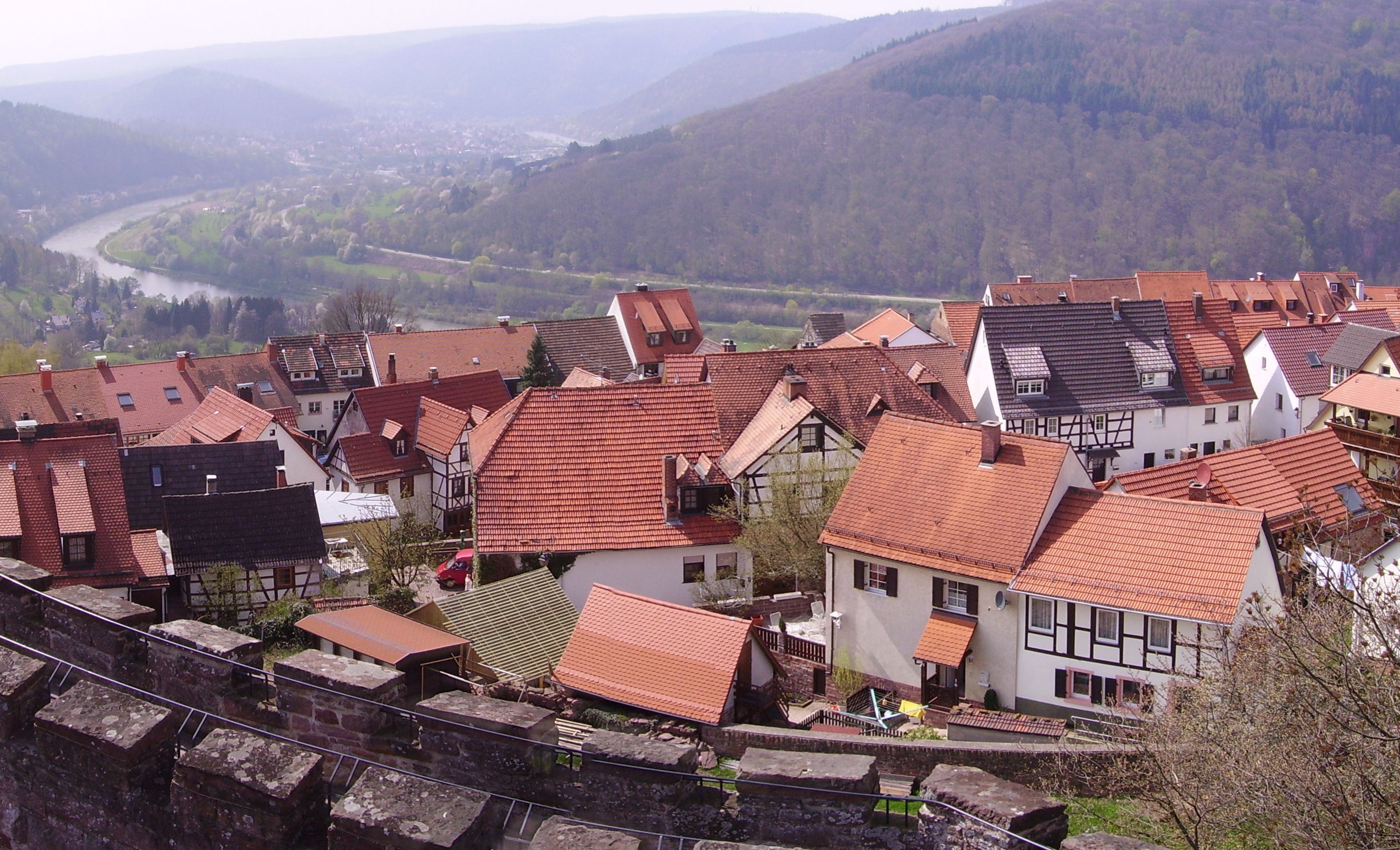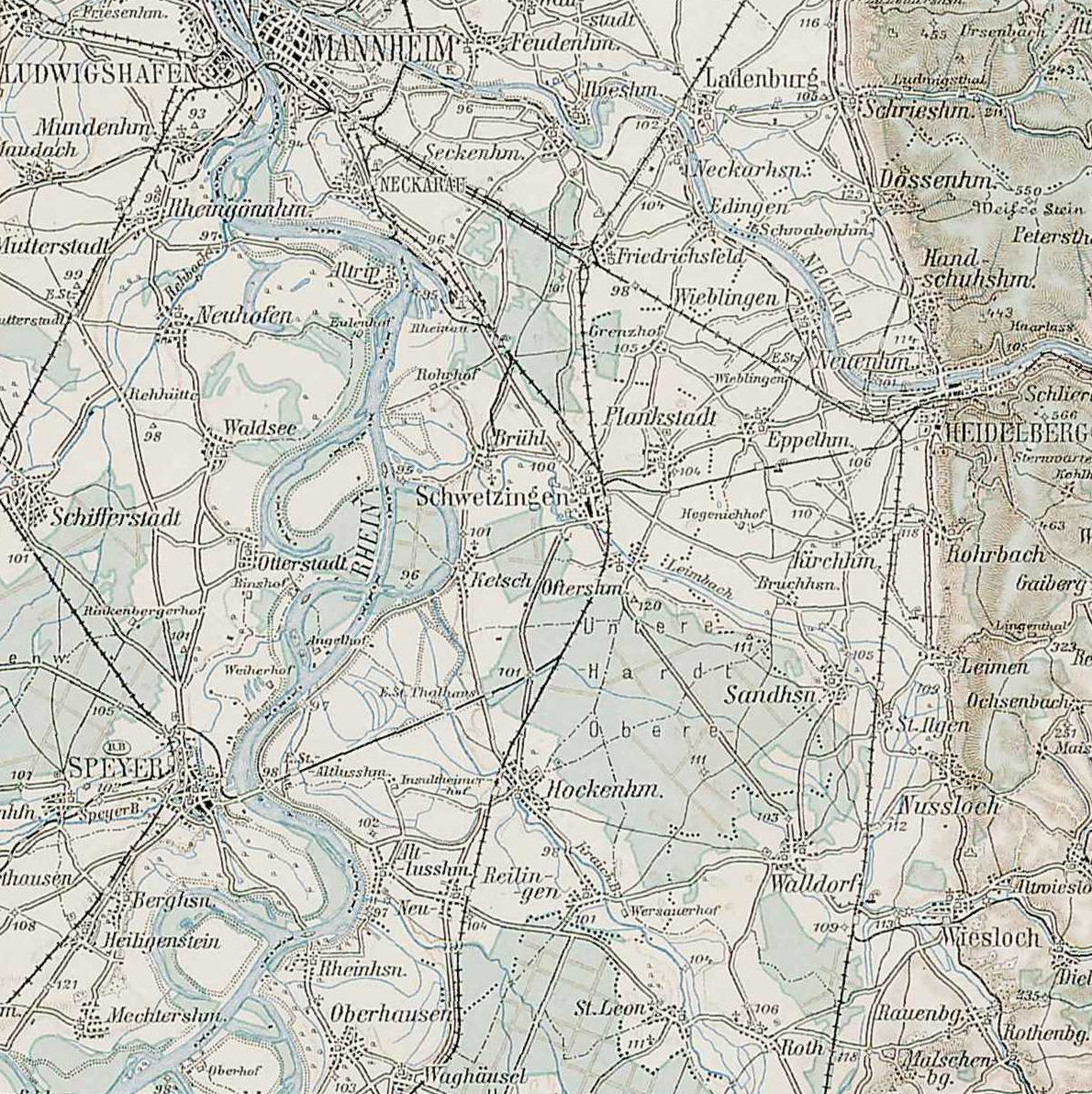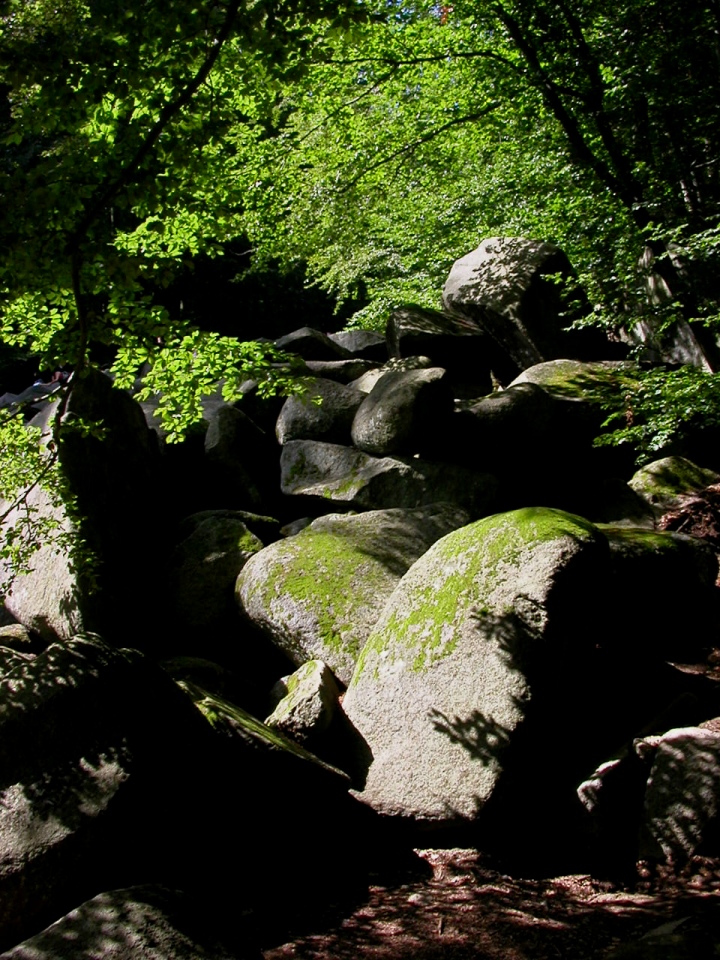|
Rhein-Neckar-Kreis
The Rhein-Neckar-Kreis is a district in the northwest of Baden-Württemberg, Germany. The administrative headquarters are based in the city Heidelberg, which is a district-free city. As of 2019, the district is the most populous in Baden-Württemberg. History The district was created in 1973 by merging the previous districts of Heidelberg, Mannheim and Sinsheim. Geography The district is named after the two main rivers which flow through the district, the Rhine and Neckar. The highest elevation is 580 m near the 584 m tall peak of the Odenwald mountain Stiefelhöhe, located near Heiligkreuzsteinach. The lowest elevation with 92 m is in Ilvesheim, located in the Neckar valley. Sights Government The district is governed by a district assembly (''Kreistag'') and a district executive ('' Landrat''). The eligible voters of the district elect the Kreistag every 5 years. This body in turn elects the Landrat every 8 years. The Landrat is the legal representative of the district as ... [...More Info...] [...Related Items...] OR: [Wikipedia] [Google] [Baidu] |
Ladenburg
Ladenburg () is a town in northwestern Baden-Württemberg, Germany. It lies on the right bank of the river Neckar, northwest of Heidelberg and east of Mannheim. The town's history goes back to the Celtic and Roman Ages, when it was called Lopodunum. Emperor Trajan elevated it to city status ('civitas') in 98 AD. The historic old town and its Fachwerkhäuser date back to the Late Middle Ages when Ladenburg was the capital of the Prince-Bishopric of Worms. Famous residents include Carl Benz, inventor of the first automobile. The Bertha Benz Memorial Route, named after Carl's wife Bertha, runs through the town. Geography Location and natural environment Ladenburg lies on the Neckar alluvial cone at an altitude of 96 to 106 metres in the Rhine-Neckar Metropolitan Region in the Upper Rhine Plain. South of the built-up area the Kandelbach flows into the Neckar. The district extends over 1900 hectares. Of these, 24.7 percent are settlement and transport areas, 71.8 percent a ... [...More Info...] [...Related Items...] OR: [Wikipedia] [Google] [Baidu] |
Hockenheim
Hockenheim () is a town in northwest Baden-Württemberg, Germany, about 20 km south of Mannheim and 10 km west of Walldorf. It is located in the Upper Rhine Plain, Upper Rhine valley on the tourist theme routes "Baden Asparagus Route" () and Bertha Benz Memorial Route. The town is widely known for its Hockenheimring, a motor racing course, which has hosted over 30 Formula One German Grand Prix races since 1970. Hockenheim is one of the six largest towns in the Rhein-Neckar-Kreis district; since 1999 the number of inhabitants exceeded the 20,000 threshold, thus the town received the status of a regional central town (''Große Kreisstadt'') in 2001. It is twinned with the French town of Commercy, the German town of Hohenstein-Ernstthal in Saxony and the American town of Mooresville, North Carolina. Geography Location and environment Hockenheim is located in the Upper Rhine Plain, Upper Rhine valley on an old trade route from Frankfurt to Basel. The brook Kraichbach divid ... [...More Info...] [...Related Items...] OR: [Wikipedia] [Google] [Baidu] |
Odenwald
The Odenwald () is a low mountain range in the Germany, German states of Hesse, Bavaria and Baden-Württemberg. Location The Odenwald is located between the Upper Rhine Plain with the Bergstraße Route, Bergstraße and the ''Hessisches Ried'' (the northeastern section of the Rhine rift) to the west, the Main (river), Main and the Bauland (a mostly unwooded area with good soils) to the east, the Hanau-Seligenstadt Basin – a subbasin of the Upper Rhine Rift Valley in the Rhine-Main Lowlands – to the north and the Kraichgau to the south. The part south of the Neckar valley is sometimes called the ''Kleiner Odenwald'' ("Little Odenwald"). The northern and western Odenwald belong to southern Hesse, with the south stretching into Baden. In the northeast, a small part lies in Lower Franconia in Bavaria. Geology The Odenwald, along with other parts of the Central German Uplands, belongs to the Variscan orogeny, Variscan, which more than 300 million years ago in the Carbonife ... [...More Info...] [...Related Items...] OR: [Wikipedia] [Google] [Baidu] |
Heidelberg
Heidelberg (; ; ) is the List of cities in Baden-Württemberg by population, fifth-largest city in the States of Germany, German state of Baden-Württemberg, and with a population of about 163,000, of which roughly a quarter consists of students, it is List of cities in Germany by population, Germany's 51st-largest city. Located about south of Frankfurt, Heidelberg is part of the densely populated Rhine-Neckar, Rhine-Neckar Metropolitan Region which has its centre in Mannheim. Heidelberg is located on the Neckar River, at the point where it leaves its narrow valley between the Oden Forest and the Kleiner Odenwald, Little Oden Forest, and enters the wide Upper Rhine Plain. The old town lies in the valley, the end of which is flanked by the Königstuhl (Odenwald), Königstuhl in the south and the Heiligenberg (Heidelberg), Heiligenberg in the north. The majority of the population lives in the districts west of the mountains in the Upper Rhine Plain, into which the city has expan ... [...More Info...] [...Related Items...] OR: [Wikipedia] [Google] [Baidu] |
Neckar River
The Neckar () is a river in Germany, mainly flowing through the southwestern state of Baden-Württemberg, with a short section through Hesse. The Neckar is a major right tributary of the Rhine. Rising in the Schwarzwald-Baar-Kreis near Schwenningen in the ''Schwenninger Moos'' conservation area at a height of above sea level, it passes through Rottweil, Rottenburg am Neckar, Kilchberg, Tübingen, Wernau, Nürtingen, Plochingen, Esslingen, Stuttgart, Ludwigsburg, Marbach, Heilbronn and Heidelberg, before discharging on average of water into the Rhine at Mannheim, at above sea level, making the Neckar its 4th largest tributary, and the 10th largest river in Germany. Since 1968, the Neckar has been navigable for cargo ships via 27 locks for about upstream from Mannheim to the river port of Plochingen, at the confluence with the Fils. From Plochingen to Stuttgart, the Neckar valley is densely populated and heavily industrialised, with several well-known companies. Betw ... [...More Info...] [...Related Items...] OR: [Wikipedia] [Google] [Baidu] |
Schwetzingen
Schwetzingen (; ) is a German town in northwest Baden-Württemberg, around southwest of Heidelberg and southeast of Mannheim. Schwetzingen is one of the five biggest cities of the Rhein-Neckar-Kreis district and a medium-sized centre between Heidelberg and Mannheim. The city is most famous for Schwetzingen Palace and the Schlosstheater Schwetzingen, Schlosstheater. The palace grounds also feature a mosque, the oldest in Germany. Although not functional, it was used by Muslim prisoners in the Franco-Prussian War. Geography Schwetzingen is located in the ''Rhine-Neckar-triangle'' in the plain of the Rhine river, lying west of the Odenwald and in the east of the Rhine. A small stream, the Leimbach, runs through the city before joining the Rhine. Climate Schwetzingen is located in Germany's warmest summer region, the "Upper Rhine Plain, Rhine shift". In summer, temperatures sometimes rise up to and higher. The Köppen Climate Classification subtype for this climate is ... [...More Info...] [...Related Items...] OR: [Wikipedia] [Google] [Baidu] |
Neckargemünd
Neckargemünd (; ) is a town in Germany, in the district of Rhein-Neckar-Kreis, state of Baden-Württemberg. It lies on the Neckar, 10 km upriver from Heidelberg at the confluence with the river Elsenz. This confluence of the two rivers is the origin of the name, as Neckargemünd means ''confluence of the Neckar''. As of 2006, there were 14,122 inhabitants. History The region has been occupied by people for a half a million years as shown by the find of Homo heidelbergensis in nearby Mauer in 1907. Stone shards and stone axes have been found from the Early Stone Age. During Roman times the area was settled by Celts and Suebi. Grave stones from the 2nd and 3rd century in Kleingemünd show Celtic names. From the end of the 5th century the Franks held sway over the region. An iron spear tip and two iron arrow heads were left behind in Neckargemünd. Neckargemünd was founded in the 10th century, most likely as a fishing village. Neckargemünd was first mentioned by name in ... [...More Info...] [...Related Items...] OR: [Wikipedia] [Google] [Baidu] |
Eberbach (Baden)
Eberbach (; South Franconian German, South Franconian: ''Ewwerbach'') is a town in Germany, in northern Baden-Württemberg, located 33 km east of Heidelberg. It belongs to the Rhein-Neckar-Kreis. Its sister cities are Ephrata, Pennsylvania, Ephrata, United States and Thonon-les-Bains, France. Geography Location Eberbach lies at the foot of the Katzenbuckel, at 626 m the highest elevation in the Odenwald, in the ''Naturpark Neckartal-Odenwald'', on the romantic Castle Road, ''Burgenstraße'' (Castle Road) along the river Neckar. Boroughs Eberbach includes the boroughs of Neckarwimmersbach, Brombach, Friedrichsdorf, Lindach, Rockenau, Badisch Igelsbach, Gaimühle, Unterdielbach, Badisch Schöllenbach and Pleutersbach. The border with Hesse runs through the borough of Igelsbach. Therefore, only the northeast half, called ''Badisch Igelsbach'', of the borough belongs to Eberbach. The southwest half, called ''Hessisch Igelsbach'', belongs to the Hessian municipality of Hi ... [...More Info...] [...Related Items...] OR: [Wikipedia] [Google] [Baidu] |
Neckar
The Neckar () is a river in Germany, mainly flowing through the southwestern States of Germany, state of Baden-Württemberg, with a short section through Hesse. The Neckar is a major right tributary of the Rhine. Rising in the Schwarzwald-Baar-Kreis near Villingen-Schwenningen, Schwenningen in the ''Schwenninger Moos'' conservation area at a height of above sea level, it passes through Rottweil, Rottenburg am Neckar, Kilchberg (Tübingen), Kilchberg, Tübingen, Wernau, Nürtingen, Plochingen, Esslingen am Neckar, Esslingen, Stuttgart, Ludwigsburg, Marbach am Neckar, Marbach, Heilbronn and Heidelberg, before discharging on average of water into the Rhine at Mannheim, at above sea level, making the Neckar its 4th largest tributary, and the 10th largest river in Germany. Since 1968, the Neckar has been navigable for cargo ships via 27 locks for about upstream from Mannheim to the river port of Plochingen, at the confluence with the Fils (river), Fils. From Plochingen to Stuttg ... [...More Info...] [...Related Items...] OR: [Wikipedia] [Google] [Baidu] |
Ilvesheim
Ilvesheim () is a municipality of about 9,300 residents (2022) in the district of Rhein-Neckar in Baden-Württemberg in Germany. It is one of the first towns located along the famous Bertha Benz Memorial Route. History Ilvesheim was first mentioned in a deed of the Lorsch Abbey from March 14, 766 AD, as a village called "Ulvinisheim". The ending "heim" means it was founded during the Frankish conquests. It is not clear whether the current name is from a then-resident called "Ulvinius" or after a small tributary creek that empties into the Neckar River, called "Ilbe." Emperor Barbarossa transferred the Lorsch possession to his half brother, the Palatinate Count Conrad in 1155. Since the end of the 13th century, Ilvesheim indisputably belonged to the Kurpfalz and was a part of the Seckenheimer concentrum. The area started as a fiefdom under the Lords of Strahlenberg. In the middle of the 14th century, it fell to the squires from Erligheim; from 1550-1654 the county of ... [...More Info...] [...Related Items...] OR: [Wikipedia] [Google] [Baidu] |
Dilsberg
Dilsberg Castle () is a ruined castle located in Neckargemünd, Germany. It was built by the counts of Lauffen in the 12th century, but in the 14th century became part of the Electorate of the Palatinate. The castle became an administrative center for the Electoral Palatinate and thus a target in the wars of the 17th and 18th centuries. In the 19th century, the castle fell into ruin and was used as a quarry. American writer Mark Twain visited the castle in the 1870s and wrote about it in '' A Tramp Abroad''. As of 2020, Dilsberg Castle is administered by the heritage agency . History Dilsberg Castle was constructed in the mid-12th century by the to replace at Wiesenbach. The castle was also intended to secure the power of the Counts of Lauffen over the area against that of the Heidelberg-based Electorate of the Palatinate. The Counts of Lauffen died out at the start of the 13th century, however, and the castle passed to the and then, in 1310, to the Palatinate. To solidify hi ... [...More Info...] [...Related Items...] OR: [Wikipedia] [Google] [Baidu] |









